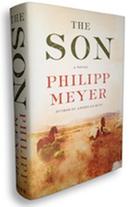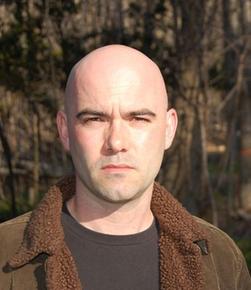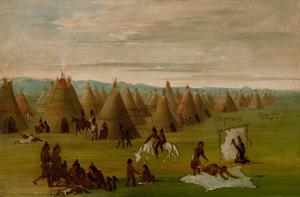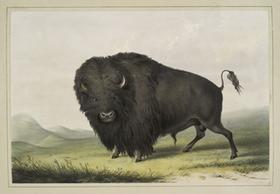
 Philipp Meyer is the author of the critically lauded novel American Rust, winner of the 2009 Los Angeles Times Book Prize. That year, American Rust was an Economist Book of the Year, a Washington Post Top Ten Book, a New York Times Notable Book, in Amazon's Top 100 and on Newsweek's List of "Best. Books. Ever." In 2010, Meyer was named to the New Yorker's list of "20 under 40," and received a fellowship from the John Simon Guggenheim Memorial Foundation. He is a graduate of Cornell University and has an MFA from the University of Texas at Austin, where he was a James Michener Fellow.
Philipp Meyer is the author of the critically lauded novel American Rust, winner of the 2009 Los Angeles Times Book Prize. That year, American Rust was an Economist Book of the Year, a Washington Post Top Ten Book, a New York Times Notable Book, in Amazon's Top 100 and on Newsweek's List of "Best. Books. Ever." In 2010, Meyer was named to the New Yorker's list of "20 under 40," and received a fellowship from the John Simon Guggenheim Memorial Foundation. He is a graduate of Cornell University and has an MFA from the University of Texas at Austin, where he was a James Michener Fellow.
---
To say Philipp Meyer brings a passion for accuracy to his historical fiction would be a severe understatement. While researching The Son, the author not only read hundreds of primary sources but also did things like learn how to track and hunt animals, tan the hides of buffalo and deer, and even drank buffalo blood to understand what that was like for native Comanches. The author of American Rust now returns with an epic of the Lone Star State that spans two centuries and three generations of a remarkable Texas family. Five years and hundreds of drafts in the making, The Son is a rich chronicle of human nature set against the inexorable machinations of history.
In the eight years following the publication of American Rust, Meyer lived in Austin, Tex. It was during this time that the idea for a book about the founding of Texas began to take shape, as Meyer realized its centrality as an event in United States history. "Texas has come to represent the prototypical 'redness of the west,' " Meyer explained. "The last open frontier was in Texas. The longest-running battles with the indigenous folks in America were in Texas--it's a part of America that represents unbridled growth."
Some of the appeal of writing about the state, for Meyer, was in dismantling the inaccuracies and stereotypes that are rampant in popular perceptions of America's history. "When the Europeans came, there were 20 million people living on the entire continent, which was its carrying capacity for human beings without a system of agriculture," Meyer points out. "In school we learned about the English landing in the east, the Spanish and French in the south, and, sure, we knew there were some Indians because we have Thanksgiving--but we were not taught that every inch of the continent was taken by force."

|
|
| painting by George Catlin | |
In contrast to this, which Meyer calls the "John Wayne view," is the myth perpetuated by media such as Dances with Wolves that the Native Americans were more peace-loving than the Europeans. Meyer notes that in fact, "people are basically just people." This is backed up by the history of North America that is seldom taught in schools--that before the Europeans arrived, the continent was populated with hundreds of tribal groups with different languages and cultures that were often at war with one another. When The Son opens in the 19th century, the Comanches are the ruling tribe of Texas. But this is after the Comanches drove out the Apaches, who in turn had previously conquered other tribes who had settled the land. "These were all violent takeovers, similar to what Germany did to France," Meyer said. Thus, in The Son, when American settlers and Comanches clash, the reality of human violence is the dominant theme, rather than an indictment of one side over another.
In his quest to preserve the moral complexity of the novel, Meyer was reluctant to interview people for research, though he did end up speaking with Comanches and Texans whose ancestors would have been involved in these conflicts. While he did conduct several rounds of interviews, Meyer said, he did so sparingly because, "This was a very bloody period in the history of this continent. The history of people on both sides, whether they were Anglo, Spanish, or Comanches, is that their ancestors often did--by modern standards--fairly horrible things. I was worried I'd become too close to people, whether they were Comanches or Texan settlers, and that my affection for them as human beings would interfere with my ability to tell the truth about the story, which is a very violent story."
Interviews were only a part of the extensive and often arduous research Meyer engaged in for The Son. In the novel there are many descriptions of hunting and the tribal customs of the Comanches--and it turns out that Meyer bases these descriptions not only on his textual research but on experience as well. He describes the lessons learned in a week at an Apache tracking school in New Jersey. "You come to understand how hard tracking is," Meyer observed. "It's like learning Algebra 1--you realize there's an entire system of knowledge you never knew existed, that if you follow it long enough you'll get to advanced calculus. The ability to track an animal in a real landscape is like calculus compared to seventh grade algebra. I'm very mediocre at tracking, but for a normal person I'm quite good at it. For primitive society or a person living in Africa now, I have the knowledge of a five-year-old." At the school, Meyer learned how to track the animals indigenous to the landscape--deer, squirrels, pigs, birds and all kinds of rodents. Meyer can also hunt, having taught himself from books how to shoot with a bow, and has hunted, skinned and eaten deer for research purposes.
 |
|
| painting by George Catlin | |
This kind of experiential research was particularly important, since the vast majority of sources left to us about Comanche society are recorded in captivity narratives--seldom from the Comanche perspective. Meyer has made a point of tanning buffalo and deer hides, as the Comanche used to do, in order to understand the experience firsthand. "To tan a deer hide takes days of backbreaking work, while buffalo hide takes weeks. I did some of those," Meyer said. "When you have the scraper in your hands and have to physically break the hide, it's hours and hours of handwringing and armtwisting." He also learned how to make arrowheads from flint and stone, and how to start a fire with sticks.
Since buffalo were integral to Comanche society, Meyer became friendly with buffalo ranchers and slaughtered some of the animals himself. But perhaps the moment he really went above and beyond the call of duty was when he insisted on drinking a cup of buffalo blood, another Comanche custom, to understand what that was like. "I told the ranchers, 'I'm going to drink some of that blood because I'm researching a book,' and they thought I was crazy," Meyer related. "I went and got a coffee mug. It tasted completely disgusting--just awful. You would think it would taste metallic, because the aftertaste of blood is metallic. Turns out it tastes like musk and salt and it's the most disgusting thing you can imagine."
Meyer insists such research is simply part of the job: "To me it's crucial to understand the landscape, the people, the language, the cultural economy, what was happening that people were worrying about then, the tools and mechanisms of life. That's why the book took five years to write. It's probably one of the strengths of the book as well: while I made the characters and story up, the truths of the life and landscape are all accurate--not only broadly but also to that specific moment in time." --Ilana Teitelbaum

